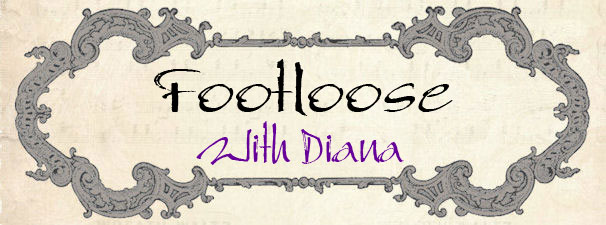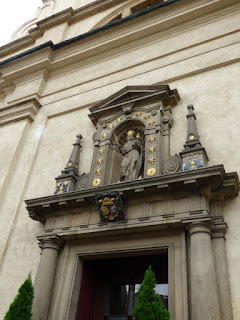A brief cruise along the Vltava River seemed in order, since so many important buildings can be readily seen from the river, not to mention that the little backwaters are quite peaceful and charming.
The Wallenstein Palace and Garden, now home of the Czech Senate, is a Baroque monument to military commander Albrecht von Wallenstein, whose military victories led him to covet the crown of Bohemia, which got him assassinated on the order of Emperor Ferdinand II.
This artificial dripstone wall in a secluded part of the garden is one of the more unusual features of the Wallenstein gardens, with its figures of frogs, snakes, monsters, grotesque faces and other creatures.
Our Church of the Lady Victorious was originally a Lutheran church, built in the early 17th century, but was given to the Carmelites by Catholic authorities who claimed it after the Battle of the White Mountain. Most visitors come to see a wax effigy of the Baby Jesus inside, which has a record of miracle cures and a regular change of costumes to fit the seasons and feast days.
The oddly-named Church of Our Lady beneath the Chain, the oldest in the Mala Strana, was founded in the 12th century and presented to the Knights of St. John, later known as the Knights of Malta; it originally stood in the center of a heavily fortified monastery. Its name refers to a chain used in the Middle Ages to close the monastery gate.
Adjacent to it is a building in which Beethoven stayed on a visit in 1796, where he composed several works dedicated to Countess Josephine de Clary who organized several concerts:
Plague fountains or columns are common in the region, usually erected in thanks for having been spared the plague, which swept through Europe regularly. I don't know anything more about this particular one, with its enigmatic topper:
Markings on a wall showing levels various floods reached:
From the River, you can see an enormous metronome which replaced a massive statue of a Stalin statue after the Czech Republic's liberation:
Secretive birds in the garden
The sala terranea, a garden pavilion
Italian fresco under the garden pavilion arches
This artificial dripstone wall in a secluded part of the garden is one of the more unusual features of the Wallenstein gardens, with its figures of frogs, snakes, monsters, grotesque faces and other creatures.
Our Church of the Lady Victorious was originally a Lutheran church, built in the early 17th century, but was given to the Carmelites by Catholic authorities who claimed it after the Battle of the White Mountain. Most visitors come to see a wax effigy of the Baby Jesus inside, which has a record of miracle cures and a regular change of costumes to fit the seasons and feast days.
Here is the figure itself
The oddly-named Church of Our Lady beneath the Chain, the oldest in the Mala Strana, was founded in the 12th century and presented to the Knights of St. John, later known as the Knights of Malta; it originally stood in the center of a heavily fortified monastery. Its name refers to a chain used in the Middle Ages to close the monastery gate.
Adjacent to it is a building in which Beethoven stayed on a visit in 1796, where he composed several works dedicated to Countess Josephine de Clary who organized several concerts:
Plague fountains or columns are common in the region, usually erected in thanks for having been spared the plague, which swept through Europe regularly. I don't know anything more about this particular one, with its enigmatic topper:
Street sign from the Nazi occupation:
Graffiti wall homage to John Lennon:
































No comments:
Post a Comment